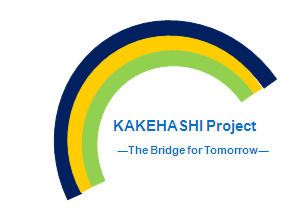|
The e-Japan Journal is the electronic webletter of the Consulate General of Japan at Chicago and the Japan Information Center (JIC). We hope it proves to be a useful, interesting, and exciting window for you on Japanese cultural activities happening throughout the Midwest. As always, your feedback, comments, and suggestions are encouraged and can be sent to our editor, Amy Klouse, at jic@cg.mofa.go.jp.
 Like the Consulate on Facebook! Like the Consulate on Facebook!
 Subscribe to our e-Japan Journal! Subscribe to our e-Japan Journal!
 Follow the Consulate on Twitter! Follow the Consulate on Twitter!
|
| |
|
|
Please click through to our Events Calendar for a full list of events, as well as information about events in the coming months!
|
|
|
|
|
|
|
|
|
|
| |
|
 Fumizuki is the traditional Japanese name for the month of July, where the kanji characters can mean "book/origin month." One theory is that fumizuki is a shortened form of hofumizuki, which refers to the time when rice becomes ready for harvest. Another possible explanation is that the name is short for fumihirakizuki, which means to hope for an improvement in one's calligraphy skills. Fumizuki is the traditional Japanese name for the month of July, where the kanji characters can mean "book/origin month." One theory is that fumizuki is a shortened form of hofumizuki, which refers to the time when rice becomes ready for harvest. Another possible explanation is that the name is short for fumihirakizuki, which means to hope for an improvement in one's calligraphy skills.
Tanabata, the major holiday during fumizuki that is celebrated on the 7th, is a time where people write their deepest wishes and pray for them to come true. Two deites (Orihime and Hikoboshi, who are represented by the stars Vega and Altair) are separated by the Milky Way Galaxy and only meet once a year on this day. In a similar way, this one day a year is a time for your wishes to come true. Read more about Tanabata in the Library section of this month's newsletter!
Marine Day, the third Monday of the month, commemorates the return of Emperor Meiji to Yokohama port from a boat trip to Hokkaido in 1876 and is the only national holiday in July.
|
| |
| |
|

The KAKEHASHI Project aims to heighten potential interest in Japan and increase the number of overseas visitors to the country. Additionally, the project strives to enhance international understanding of the "Japan brand," or the nation's strengths and attractiveness, based on Japanese-style values and "Cool Japan." It is anticipated that this project will help to revitalize and boost the Japanese economy.
University of Wisconsin-Oshkosh students took their trip to Japan from May 14-24 while University of Wisconsin-Madison students were in Japan from May 20-30. Four other high schools - Bloomington High School North (Bloomington, IN), Southwest High School (Minneapolis, MN), Robbinsdale Armstrong High School (Plymouth, MN), and Whitney Young Magnet High School (Chicago, IL) - will travel to Japan from July 8 until the 18th to promote understanding among the people of Japan and the United States.
You can access a blog and photographs from the Wisconsin students' trip on our website! Youth Exchange - KAKEHASHI Project.
|
|
| |
|

Prepare yourselves for one of the largest Anime Conventions in the Midwest coming in July! There will be several special guest speakers who are involved in the anime and manga industry, vendors selling Japanese or Japanese culture-inspired items, cosplay galore, and a rave dance party in the evening. Visit their website to purchase your ticket today and to read more about what the weekend has to offer.
While there, drop by the Consulate's table that will be there only on Friday to learn more about the Japan Exchange and Teaching Program (JET). We will also have fliers detailing Japan-related events in the Midwest that are approaching in upcoming months.
July 5-7, 2013
Consulate Table - July 5, 2013 only
|
Hyatt Regency Hotel O'Hare
9300 Bryn Mawr Ave
Rosemont, IL 60018
(847) 696-1234
|
| Anime Midwest Website |
|
| |
|

Through the JET Memorial Invitation Program (JET-MIP), 32 high school students will visit Japan for two weeks from July 6th until July 24th, 2013. The full list of the finalists who will be participating this year can be found in the Japan Foundation's Breeze Issue #68. Congratulations to the following Midwestern students:
- Devoni Guise (Whitney M. Young Magnet High School, IL)
- Andrew Ryfa (Highland High School, IN)
- Jacob Wolter (Lincoln High School, WI)
- Yunsu Yu (Glenbrook South High School, IL)
On March 11, 2011, two Americans participating in the JET Programme as assistant English language teachers lost their lives during the Great East Japan Earthquake and Tsunami. Both Taylor Anderson and Montgomery Dickson had a positive influence on the people and communities they served and JET-MIP was created immediately following the 2011 disaster to commemorate their work.
Please visit the JET-MIP portion of the Japan Foundation website for program details. |
| |
|

Congratulations to 2013 JET Participants departing to Japan on July 27! May all of you have a year full of memorable experiences, enriching cultural exchanges, and great networking opportunities.
Interested in working as an English Teacher in Japan in the future? Refer to the JET Program portion of our website.
|
| |
|
Recognizing the value of the Japan America Societies in fostering mutual understanding between the US and Japan on a grassroots level, the Japan Foundation Center for Global Partnership launched the JAS Initiative in 2008 and is continuing to support sustained growth and innovation. In order to further strengthen Japan America Societies in the National Association of Japan America Societies network and to enhance their effectiveness in carrying out their mission, the Japan America Society Initiative will support capacity building and/or networking projects that demonstrate feasibility and organizational sustainability.
Concept Papers due by July 31, 2013 - Concept papers from prospective applicants prior to the submission of a full proposal are requested to determine whether the project falls within program guidelines and priorities. Please visit the JAS Initiative Grant website for proposal guidelines and more informaton.
|
| |
| |
|

|
Welcome to the new and updated JIC Library section of the e-Japan Journal! If you have any questions, comments, or suggestions, feel free to contact our librarian directly at emily.toelcke@cg.mofa.go.jp.
|
| |
|
Highlighted Resources is a column written by JIC librarian Emily Toelcke that features notable library materials we offer per month.
|
| ---------------------- |
According to an ancient legend, the celestial stars, Altair and Vega, were once two lovers - a poor farmer and a goddess who wove beautiful cloth. Separated from each other by the Milky Way, they were granted one wish - the ability to meet once a year on the night of the seventh day of the seventh month.
Although the story originally came from China, it was first celebrated in Japan in 755 AD. However, while the basic premise is the same, there are multiple versions of the legend. Here in the library we have two. The first is in the compilation Once Upon a Time In Japan Vol. 2 (Call Number 510081). Notable features include crediting the creation of the Milky Way to an overly juicy melon. The second, The Story of Tanabata (七夕物語)is in both English and Japanese and maintains that every year a flock of magpies form a bridge across the galaxy so that the two lovers can meet. While both are appropriate for all ages, the second, which is in kamishibai form, truly brings the story to life in a whole new way for younger listeners. If you are interested in borrowing this traditional Japanese story-telling prop, check out our Resources page for further information.
The Tanabata Festival is celebrated in certain parts of Japan on July 7th and in other parts a month later. Of course, no celebration occurs without unique traditions. The book Japanese Festivals by Helen Bauer and Sherwin Carlquist (Call number 145002) dedicates an entire chapter to the Star Festival - its customs, history, and regional celebrations including the best-known matsuri in Sendai. The book also explains why there are two different celebratory dates. It should be noted that Japanese Festivals also covers an additional 354 celebrations and includes a monthly calendar and location guide so it is a great resource for all Japanese festivals.
The Japan Video Topic's 2012/2013 DVD Seasonal Traditions in Japan (Call Number JVT 2012/2013.06) also highlights Tanabata as well as a variety of Japanese festivals. Even though the information is extremely condensed (the "Summer" section is 3 minutes and 42 seconds), the film is a great introduction to the sights and sounds of seasonal Japan. It can be borrowed through the library or viewed online.
The most recognizable image of Tanabata is tanzaku hanging from bamboo branches. These brightly colored strips of paper each contain wishes to be realized on the day the star-crossed lovers meet. Following this tradition, the JIC has set up its own Tanabata display until August 7th. If you would like to add your wish, please stop by or mail it to us at 737 N Michigan Ave, Suite 1000, Chicago, IL 60611. We hope to have a tree full of wishes by the end of the season! |
|

|
| |
|
New Editions, also written by Emily Toelcke, showcases the latest materials we have received in the JIC collection.
|
| Title |
Author |
Language |
| Case Closed (vol. 1-9) |
Aoyama, Gosho |
English |
| Belka, Why Don't You Bark? |
Furukawa, Hideo
Emmerich, Michael (translator) |
English |
| 101 Modern Japanese Poems |
Ooka, Makoto (compiler)
McCarthy, Paul (translator) |
English |
| Rapid Reading Japanese |
Miura, Akira; Oka, Mayumi |
English |
| 和菓子のこよみ十二ヶ月 |
平野恵理子 |
Japanese |
| アメリカ人になりたい!? |
井上一馬 |
Japanese |
| ハル・ライシャワー |
上坂冬子 |
Japanese |
| 8カ国語同時会話・単語辞典 (1985 ed.) |
外国語研修会 |
Japanese, English, French, German, Italian, Spanish, Korean, Chinese |
| |
| |
|
Here are FOUR(!) questions about current events in Japan. Email your answers for the chance to win a small prize!
- UNIQLO, teamed with Grameen Healthcare, announced they will open stores where?
- Who was the the world's oldest man (according to the Guinness Book) and what was his age when he passed away?
- Ms. Kana Satomi is the first female shogi player to accomplish what?
- What did Mr. Akira Kato accomplish on June 14, 2013?
Answers from the June Quiz:
Congratulations to Lianne Burnson, who answered all questions correctly in our June issue.
- This month, Yuichiro Miura was the oldest man to do what?
Yuichiro Miura, at age 80, is the oldest man to climb to the summit of Mount Everest. This is the third time he has held this record (also in 2003 and 2008). You can read more about his amazing life and his accomplishments here.
- Which Japanese film (film name and director's name) received the Prix du Jury at the 2013 Cannes International Film Festival?
Like Father, Like Son directed by Hirokazu Koreeda received the Prix du Jury at the 2013 Cannes International Film Festival. It was the third of Koreeda's works to be screened at the Cannes competition in 12 years, and follows "Nobody Knows" for which Yuya Yagira won the Best Actor award in 2004. Click here for more information on this film and others that were in the Cannes Festival.
- What symbolic gift of recovery was given to the town of Minamisanriku by Chile?
A 3-metre (10 foot) Moai statue was given to Minamisanriku by Chile in order to supply a new statue to the fishing community after the town's original was destroyed in the March 2011 disaster. The town's link to Chile, some 17,000 kilometres (11,000 miles) away, dates back to 1960, when a 9.5 magnitude earthquake struck the South American country and killed more than 1,600 people. You can read more about this news story here.
- To submit your answers by email, send your guesses to jic@cg.mofa.go.jp and write "Japan News Quiz" in the subject line.
|
| |
|
 J-Center J-Center
The J-Center, founded in 2011 by the United States Center for Citizen Diplomacy (USCCD), has a mission similar to ours here at the JIC by providing cultural awareness and resources to those residing in the American Midwest. A three-year grant from the Japan Foundation Center of Global Partnership (CGP) made the establishment of this organization possible. The J-Center's headquarters is in Des Moines, IA and includes the states of Michigan and Ohio (which are not included in the Chicago Consulate's jurisdiction, but in Detroit's).
For those of you who are educators or interested in education as a field of study, the K-12 lesson plan materials and the information provided on upcoming conferences may be particularly useful.
|
| |
|
Happy July everyone!
As promised, I made three Japanese dishes in June that were absolutely delicious. My first project (which I have made before and is quite simple to make) was miso soup where I added nameko mushrooms, tofu, negi, and wakame. My second creation was shoyu ramen, because homemade ramen (not the instant kind!) is one of my favorite foods. I topped this off with bamboo shoots, scallions, nori, an egg, and pork. The final dish I made was Oyako-don, a real piece of cake to make when you have the right ingredients!
During the process of finding recipes to my liking, I found this extremely helpful blog (Just One Cookbook) that includes images of ingredients with the packaging they come in. It also provides alternative ways to make items you may have difficulty finding. Starting from humble beginnings, her blog and advice is also inspirational for those aspiring to take off in an increasingly technology-driven, social media oriented world.
Best,
Amy Klouse (Editor, Technology and Information Coordinator)
|
| |
|

|
|
Tanabata Festival in Edo [Hiroshige, 1852]
|
| |
| You are receiving this email webletter because you have signed up to receive information about Japan and Japan-related events from our office. If you no longer wish to receive these emails, please email the Japan Information Center at jic@cg.mofa.go.jp. |
| |
|
|
|